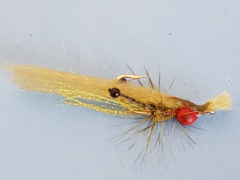Posts Tagged ‘saltwater’
{{start}}
{{end}}
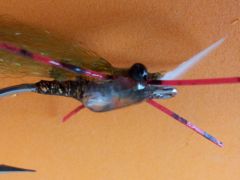
{{+1}}Topwater sand stripper{{-1}}
{{start}}
This fly is modelled on the most successful estuary and inshore fly that I have ever fished with my prawn fly. For me in those shallow water salt water environments where you need a fly that you can fish deep in and around snags and other structure, can be fished at a range of depths depending on fly line and retrieve and swims hook point up to reduce hooking up on that very structure that holds fish my prawn fly out-fishes every other fly I have tried.{{end}}

{{+1}}Fusion – soft plastic lures as flies{{-1}}
{{start}}
These soft plastic / flies are best fished in the same way as fishing a soft plastic on spin gear. I generally fish them using a #8 to #10 weight fly rod depending on the weight of the head and on a fast sinking fly line so that I can get them a little deeper.{{end}}
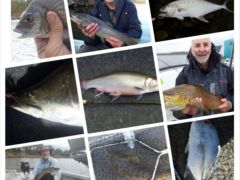
{{+1}}Trout – preparing for an extended trip{{-1}}
{{start}}
My travel/ backup fly fishing kit that will act as: A travel fishing kit that can stowed in my van or car to cover those situations when on the road we decide to have an un-programmed stop and a fishing opportunity presents itself. A backup when fishing from either of my boats or from other boats in fishing competitions{{end}}
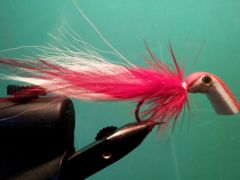
{{+1}}Chatto’s Mangrove fly{{-1}}
{{start}}
I like to fish it on either a floating line or an intermediate line with the depth of water just outside the target area being the determining factor. Fishes best if cast deep into the target area and just let it sit for up to 10 seconds. After that wiggly your rod tip so that the fly just shudders in the water activating the rattle. You can then retrieve the fly using a medium stripping action punctuated with plenty of stops and even let the fly float back to the surface and rattle the rod tip again.{{end}}
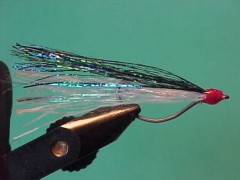
{{+1}}Bendback{{-1}}
{{start}}
The bendback is very effective fly in locations that contain a lot of structural hazards such as oyster racks, mangroves, tree stumps and rock bars. The design of the fly reduces the propensity of the fly to snag. Choose the colours of your materials so that your version mimics local bait fish.{{end}}
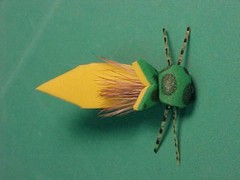
{{+1}}Bass foam hopper{{-1}}
{{start}}
When I converted my trout foam hopper for use as a bass and tropical fly fishing I added a sparkle chenille under-body and grossed it up dramatically so that it would withstand the aggressive nature of fish like Australian bass and tropical species such as mangrove jack.{{end}}
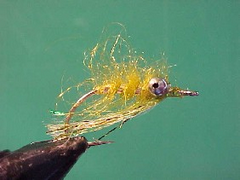
{{+1}}CNN – Chatto’s original{{-1}}
{{start}}
No this is not a fly promoted by a news network, rather the CNN stand for "Cheap aNd Nasty". I first tied this fly for use around structure where if you don't loose a few flies then your not in the game. The fly I had previously used in those situations was an estuary fly that cost between $2 and $3 to make. Doesn't sound like much but after 5 or 6 snags in a session you have to wonder. The CNN costs less than $1 to tie, is easy to tie and it works really well either fished alone or as a dropper fly behind a popper or beetle.{{end}}
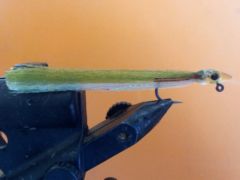
{{+1}}Candy – resin head minnow{{-1}}
{{start}}
This is a great fly to rip through the water in front of Tailor, Australian Salmon, Tarpon and any other fish that is a predator of small fish. The combination of the resin head and the body materials create a fly that is translucent and a very effective imitation of many small thin fish that that are targeted by bigger fish. This fly is much easier to tie than a candy and in my view a better fly overall.{{end}}
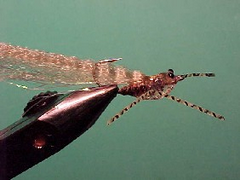
{{+1}}Mud prawn – small 5cm to 6cm long{{-1}}
{{start}}
The mud prawn is my first choice of fly for general prospecting in estuary waters or for targeting, whiting, flathead and bream. In water of only a meter or so fish it on an intermediate line. In deeper water I prefer to fish it on a sinking line. The best retrieve is a jerky but slow retrieve leaving plenty of time between strips for he fly to settle back on the bottom. used in this way it's a good representation of a prawn fleeing from its sandy retreat after being disturbed.{{end}}














